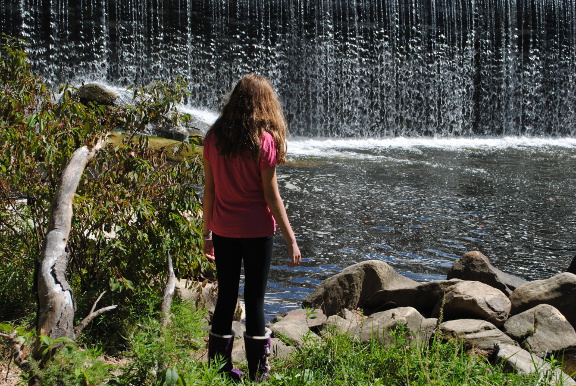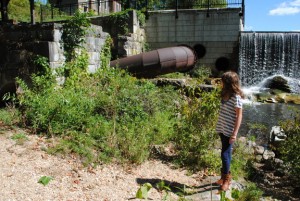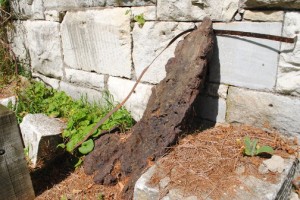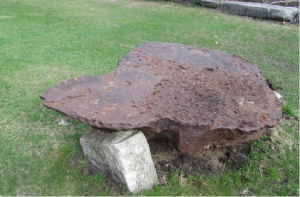While Beckley is mainly the state’s Industrial Monument…
it’s also a park, and there are definitely park-like aspects to the place.
There are, for example, four picnic tables — and not so close to each other that one feels one is in a cafeteria. Here’s one at the top of the dam:

There are two picnic tables in front of the furnace itself, in the area that once was the casting shed, and another on the lawn overlooking the new turbine house.

This section of the Blackberry River is also popular with anglers. Frequently there are furnace site tours going on at the same time that people are actively fishing in the Blackberry just a few feet away.
Just on the other side of this wall, in fact:

Occasionally families take a dip in the pool below the dam — but the water is pretty cold, and there’s no lifeguard on duty.
However, it’s not always necessary to be doing something active. Beckley today offers something that it most assuredly it did NOT offer back in the day when it was an active iron blast furnace, with all the noise, bustle, and confusion that accompanied it. With the waterfall as background noise, the Beckley Furnace site is also a place to be contemplative — to be alone with your thoughts…

What you will NOT find at Beckley Furnace:
Yes, Beckley is a State Park. However, please be aware that:
- there are no public rest rooms at the facility
- mentioned above but worth saying again: there are no lifeguards on duty
- while there is a good cellphone signal at the site, there are no public phones
- during most hours there are no rangers or other park personnel on duty
- BUT there are no admission fees or other charges for visiting the facility!



